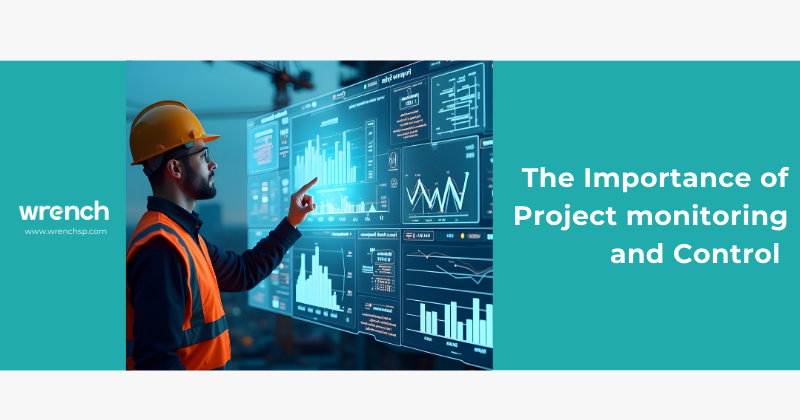The ability to monitor and track progress in EPC projects is essential to its successful delivery. That means being able to implement reliable project monitoring systems that will let you measure and document how work is going in real life and compare actual progress to planned progress, so that you can assess whether you are on or behind or ahead of the schedule and step in to make any course-corrections that are required.
For several years now we’ve been watching EPC projects incorporate more and more digital systems into project management and the key tasks of project monitoring and project controlling are no exception. In fact, we’re are seeing organisations ever more willing to assign these tasks to project monitoring & control software. As the digital revolution continues to sweep across the EPC industry, we can expect to see the shift accelerate.
How will this impact the industry?
We can expect to see improvements in project delivery success rates, as even a basic project monitoring & control software will greatly benefit the the project team’s ability to ensure that deliverables get completed on time and on budget. For example, we can expect to see project managers analysing planned vs actual progress in real time and using AI-driven predictions to enhance their decision-making.
But when you get down to it, why exactly are project monitoring and control software so effective?
When you consider the nature of project monitoring and control, you can imagine how fraught with potential problems the current systems are and how beneficial a digital system would be. But it should be understood; such systems don’t replace the human managers’s role, they support it. Because at its core, project control is not just a matter of ticking off boxes in a checklist or enforcing procedures – that’s part of it – it’s about adopting a ‘prevention is better than cure’ mindset. Project control software empowers managers by letting them keep an eye on both the big picture and the smallest detail, and being able to recognise small deviations before they snowball into disasters.
A project manager using modern project monitoring and control software would have all the data he needs to keep the project on track, he could step up his Risk Management methods and adopt a proactive approach supported by good mitigation and recovery strategies, he could allocate and manage his workers effectively across his project portfolio, making the most of each dollar spent on manpower, and he could satisfy clients and stakeholders easily by using the system to build trust and transparency.
Traditionally, a project manager or project team tasked with monitoring a project’s progress was burdened with many steps and procedures that had to be meticulously followed in order to accurately track the project’s resources, timelines, cash flow, and so on. In the past, companies tried to use various applications for different aspects of the larger task of monitoring, but nowadays we have integrated systems which offer a lot more value. And as with any modern digital system, project monitoring & control software can be a very powerful tool in the hands of a smart project manager, giving him the data and insights he needs to take decisive actions quickly.
Now let’s understand what exactly such a system does.
First, it sets up a solid framework in which to manage the project, with clear scopes, baselines, and standards/benchmarks. This gives the project manager a strong foundation to work from. As work progresses, the system enables real-time tracking, based on those benchmarks and standards and even KPIs, so the manager knows exactly what is going and what he’s dealing with.
A good project monitoring and control software won’t just document and count progress against the baseline or the benchmarks, it will analyse the data at a deeper level to provide useful insights and predictions that prompt action. Depending on the system and how advanced it is, it can function like a guide to project managers. Some systems will even step in with contingency plans, or recommend an action in case of deviation (based on past successful problem+solutions stored within the system).
One often-overlooked benefit of such systems is their ability to improve communication, especially with stakeholders. Better communication goes a long way in keeping everybody happy and on the same page and keeps the relationships between all parties working smoothly and without conflict. And this extends to reporting; some systems provide automated-report generation, which makes sure that stakeholders get the latest, reliable data about the project’s progress without having to ask for it or constantly send reminders.
In conclusion, investing in a good software solution to enhance your project controlling and monitoring goals is one of the best decisions you could possibly make, especially in today’s era of multi-located project teams, distributed workforces (or workforces shared across multiple projects), and ever-changing regulations and standards, including local environment and climate-related policies. Such a system will become your project manager’s best friend, most useful tool, and even his most trusted advisor.
